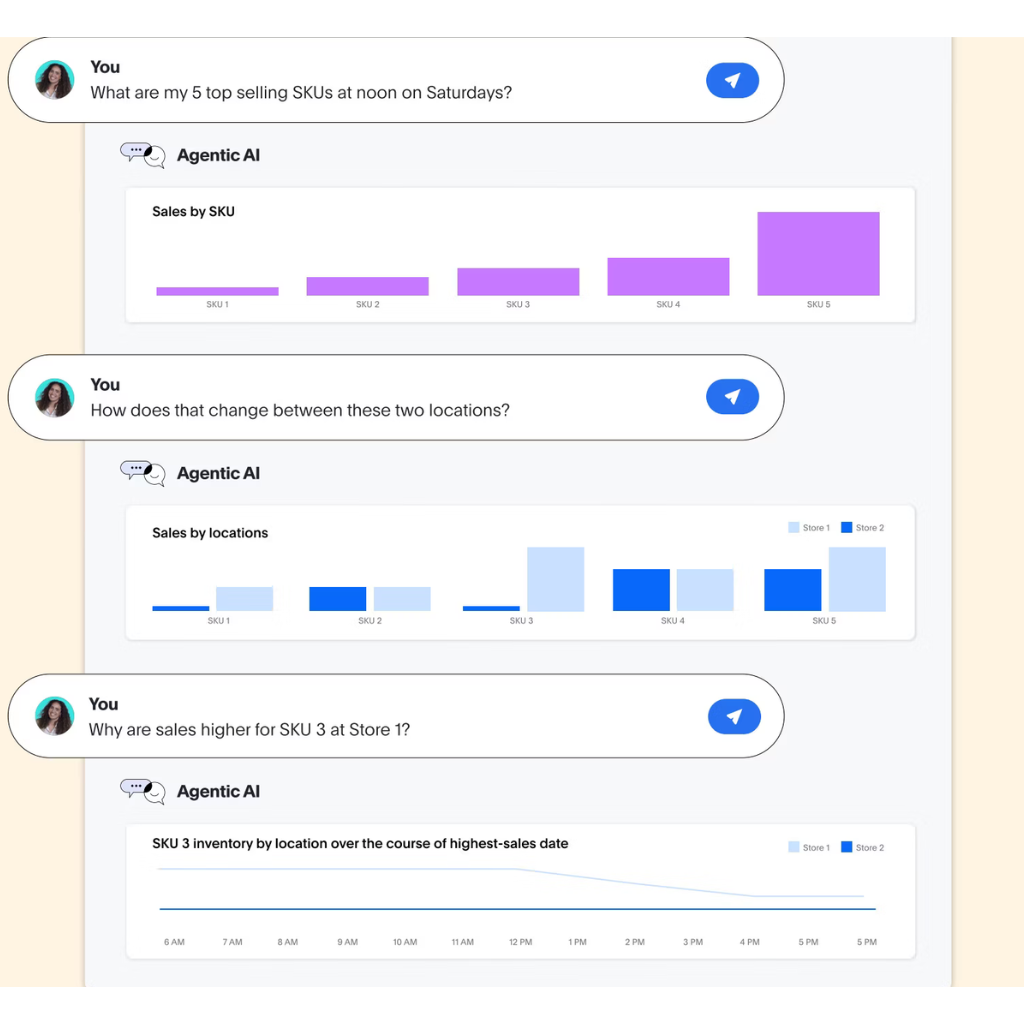What Are AI Agents, and How Do They Differ from Workflows?
Picture this: a system so intelligent it can plan, adapt, and make decisions independently. That’s what we call an AI agent. Think of an AI agent as your highly capable virtual assistant—it doesn’t just follow orders but dynamically figures out how to achieve the goal. For example, it could research competitors, design a marketing plan, and draft strategies—all on its own initiative.
For many in the know, what I’m talking about is not as mystifying as how AI companies use large language models (LLMs) to create enough autonomy to independently make judgements and act as an intelligent agent for people.
In contrast, lower-tech workflows, are more like detailed instructions for an entire factory assembly line. They are rigid, step-by-step processes designed for predictable tasks. A workflow might automate email responses using predefined templates as an example. It’s efficient and consistent but lacks flexibility or the ability to adapt to novel situations which AI agents promise to bring to the table. Are they successful?
Anthropic has been quietly publishing documentation on how they customize LLMs to both do routine tasks and to also handle novel situations where judgements and decisions must be made on behalf of the human user. Their documentation sheds a great deal of light on what AI agents can and can’t do.
When Should You Use Agents Instead of Workflows?
Start Simple
When deciding between agents and workflows, simplicity should always come first. If a straightforward workflow can get the job done, stick with it. For example, workflows are excellent for repetitive tasks like tagging support tickets or automating invoice approvals.
Weighing the Tradeoffs
Agents shine in tasks requiring adaptability but often at a higher cost and slower execution speed. Consider a coding agent debugging complex software—it may iterate multiple times to resolve an issue. On the other hand, workflows excel at handling straightforward processes with speed and reliability.
Key Differences: Workflow vs. Agentic Systems
If predictability and repeatability are key, workflows are your go-to—like automating payroll or scheduling. But for tackling complex, open-ended problems such as event planning or trend analysis, agents provide the flexibility to adapt and respond dynamically.
How Can Frameworks Simplify Agent Development?
Creating agents from scratch can feel overwhelming. Frameworks like LangGraph and Amazon Bedrock’s AI Agent Framework simplify the process. They provide tools for chaining tasks, integrating APIs, and managing workflows with minimal effort.
Benefits of Frameworks
- Efficiency: Frameworks accelerate development. For example, LangGraph enables multi-step processes like summarizing reports and generating actionable insights.
- Seamless Integration: Tools such as Rivet allow you to connect LLMs to databases and APIs quickly, eliminating manual configurations.
Drawbacks of Frameworks
- Complexity Overhead: Frameworks can obscure underlying processes, making debugging challenging. Imagine trying to identify why an agent’s performance fell short only to be bogged down by hidden abstractions.
- Overengineering Risks: It’s tempting to build overly complex systems when using frameworks, which might lead to unnecessary complications.
Pro Tip: Begin with basic API calls. Use frameworks only when their benefits outweigh the additional complexity.
What Are the Building Blocks of Agentic Systems?
Augmented LLMs: The Core Component
At the heart of any agent is an augmented LLM—a large language model enhanced with tools like memory, retrieval capabilities, or external databases. Imagine it as an assistant with instant access to your calendar, emails, and historical data, offering tailored solutions for every task.
Prompt Chaining
Prompt chaining divides tasks into manageable steps. Take the example of creating a marketing campaign:
- Draft initial copy.
- Translate the copy into multiple languages.
- Run quality checks for accuracy and cultural relevance.
This modular approach ensures quality control and minimizes errors by allowing iterative improvements.
Routing
Routing acts like a smart dispatcher, directing tasks to the right specialist. For instance:
- Technical queries might go to a dedicated support bot.
- Billing issues could be forwarded to a finance-focused agent.
This ensures that tasks are resolved efficiently by the most qualified system.
Parallelization
Why handle tasks sequentially when they can happen simultaneously? With parallelization, agents can tackle multiple subtasks at once. For example:
- Break down a competitive analysis into sections such as pricing, customer sentiment, and market trends.
- Aggregate results quickly for a comprehensive overview.
Orchestrator-Worker Models
An orchestrator AI oversees and delegates subtasks to specialized worker agents. For instance:
- Planning a product launch might involve assigning market research to one agent, logistics planning to another, and creative design to a third.
- The orchestrator consolidates the outputs into a cohesive plan.
Evaluator-Optimizer
Here, one AI generates content while another critiques and refines it. This back-and-forth interaction is ideal for:
- Literary translations: Ensuring the final version captures tone and nuance.
- Research synthesis: Iteratively improving the depth and accuracy of the analysis.

What Makes Agents Unique?
Agents go beyond static instructions—they solve problems collaboratively and adapt as needed. For example:
- Real-Time Adaptability: An agent managing deliveries might reroute shipments if unexpected delays occur.
- Error Recovery: A coding agent could identify and fix a bug that it initially missed, learning from the mistake.
Additionally, agents engage humans when necessary. For instance, if an event-planning agent encounters ambiguity, it might ask, “Would you prefer a virtual or in-person venue?”
How Are Businesses Using Agents Today?
Customer Support
AI agents enhance customer experiences by pulling up historical data, suggesting tailored solutions, and resolving complex queries end-to-end. For example, an agent might:
- Answer FAQs accurately.
- Update account details or track shipments.
- Escalate unresolved issues to a human representative.
Software Development
Coding agents are revolutionizing development processes. They can:
- Write boilerplate code.
- Debug complex software by running automated tests.
- Iterate on solutions to improve accuracy and efficiency.
What Are Some Inspiring Use Cases for Agentic AI?
- Data Analytics: Generate visual insights from raw data in seconds.
- Product Strategies: Help developers debug, optimize, and deploy code while enabling teams to focus on innovation.
- Customer Engagement: Offer personalized responses and proactive support at scale.
- Task Automation: Streamline processes like data cleansing and organization to save time.
- Market Forecasting: Predict trends and inform strategic decision-making.
What Are the Challenges of Adopting Agentic AI?
Governance and Oversight
AI systems must operate under clear ethical guidelines to avoid issues like bias or privacy breaches. For instance, hiring recommendation agents should be monitored to prevent discriminatory practices.
Infrastructure Maturity
Many agents lack robust capabilities in goal-setting, planning, and self-correction. Progress is ongoing, but there’s room for improvement.
Organizational Readiness
Not all companies are ready for agentic AI. Success often depends on having the right infrastructure, talent, and tools. Emerging technologies like enhanced robotic process automation (RPA) and retrieval-augmented generation (RAG) are helping businesses close this gap.
What Are the Three Core Principles for Success with Agentic AI?
- Simplicity: Begin with clear, simple goals and expand complexity only when necessary.
- Transparency: Ensure the agent’s decision-making process is visible and understandable.
- Tool Robustness: Build reliable, testable tools to guarantee consistent performance.
Agentic AI is transforming industries with its ability to plan, adapt, and solve complex problems. By starting with well-defined objectives and leveraging the right tools, businesses can harness its potential while managing associated risks effectively.





